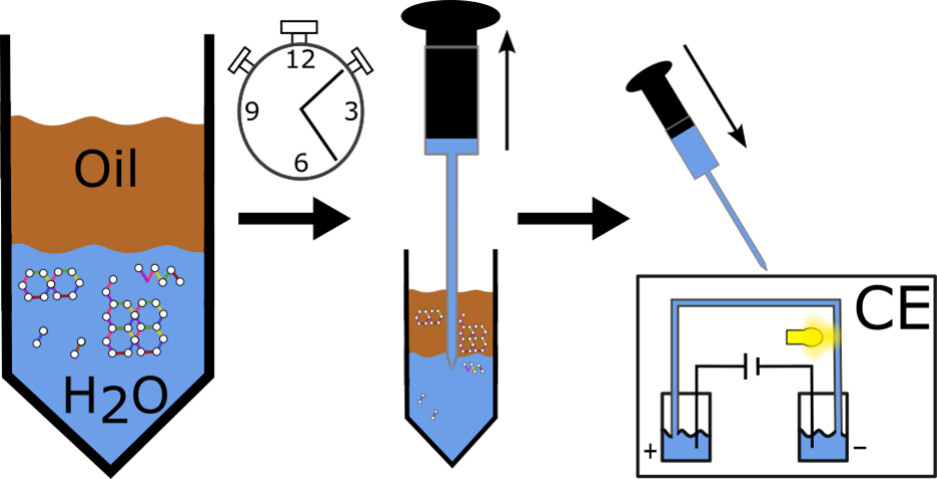During oil extraction, large volumes of produced water are brought to the surface alongside hydrocarbons. To manage common challenges like bacterial growth, pipeline corrosion, and poor oil–water separation, production chemicals such as biocides and corrosion inhibitors are routinely added. However, once treated water is discharged into the ocean, the fate of these chemicals — and their potential environmental impact — becomes a critical concern.
To better understand how these chemicals behave, the researchers applied capillary zone electrophoresis (CZE) to estimate partitioning coefficients — a measure of how a chemical distributes between water and an organic phase. Specifically, they tested the distribution between water and either octanol (a common proxy for organic matter) or crude oil.
The method was first validated using aliphatic carboxylic acids and other molecules with similar structures to typical production chemicals. It was then used to evaluate two commercial corrosion inhibitors and one biocide commonly applied in oilfields.
The findings show:
-
Most chemicals tested had a clear preference for remaining in the water phase, regardless of whether the organic contact phase was octanol or crude oil.
-
Logarithmic partitioning coefficients ranged from −0.36 to −1.68 for water/octanol, and from 2.68 to −1.41 for water/crude oil.
-
One corrosion inhibitor displayed contrasting behavior depending on the organic phase — preferring water in contact with octanol but switching to the oil phase when in contact with crude oil.
This shift demonstrates that partitioning behavior cannot always be generalized based on simple models and highlights the need for more nuanced approaches when evaluating the environmental fate of oilfield chemicals.
The study also shows the potential of CZE as a practical tool for on-site analysis. Due to its speed and simplicity, the method could be implemented in offshore operations to support real-time assessments of chemical distribution and environmental risk.
By improving our understanding of how chemicals behave in produced water systems, this research contributes to more effective treatment strategies and helps ensure safer offshore discharges.
Read the full paper here: Estimation of Oil–Water Partitioning Coefficients of Commercial Production Chemicals by Capillary Zone Electrophoresis | Energy & Fuels

